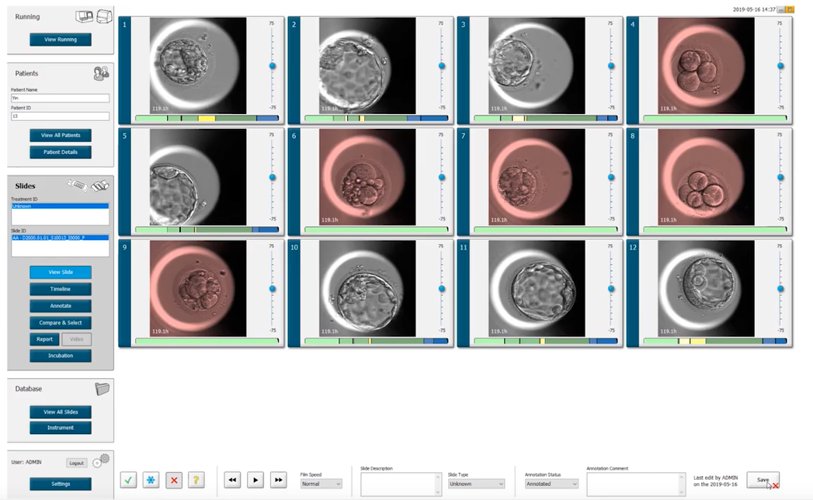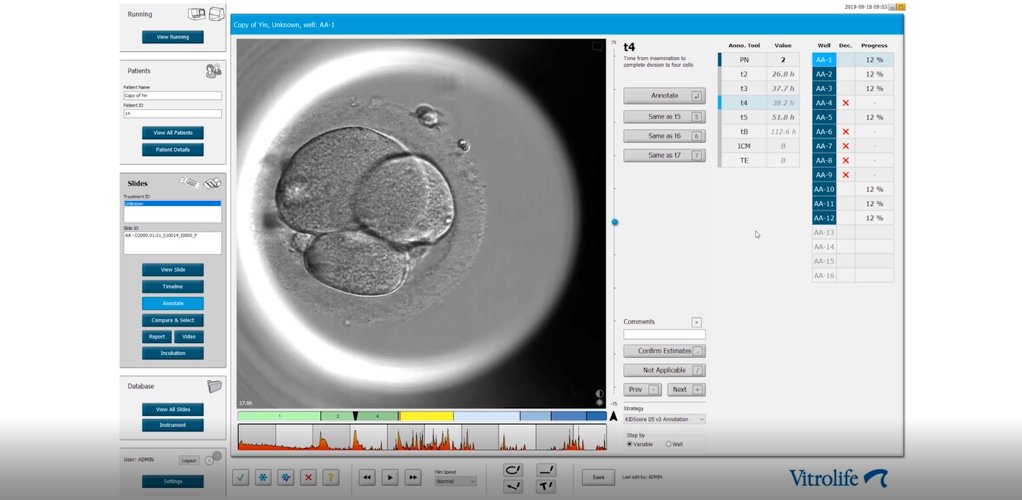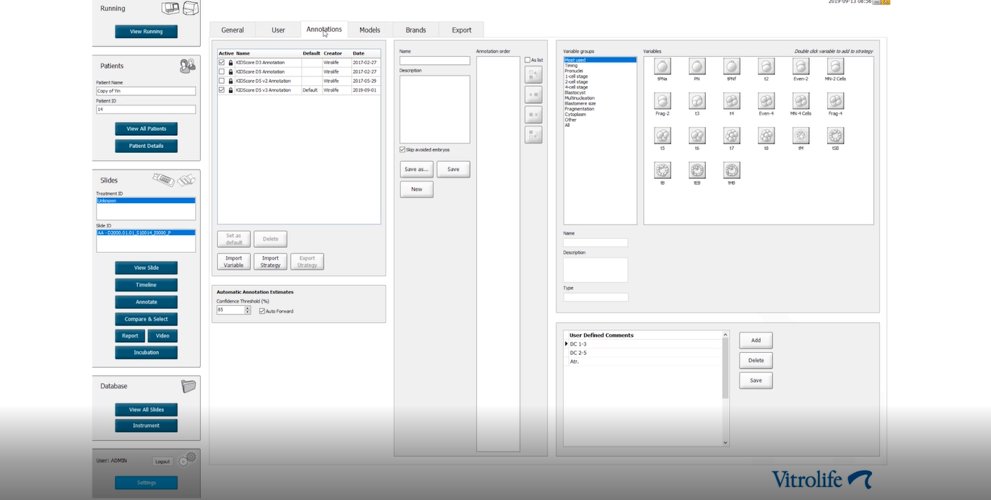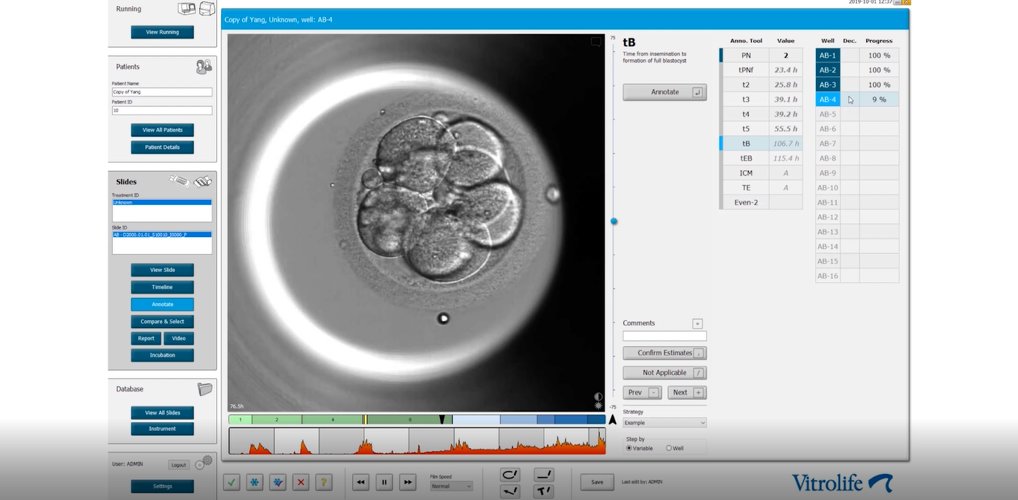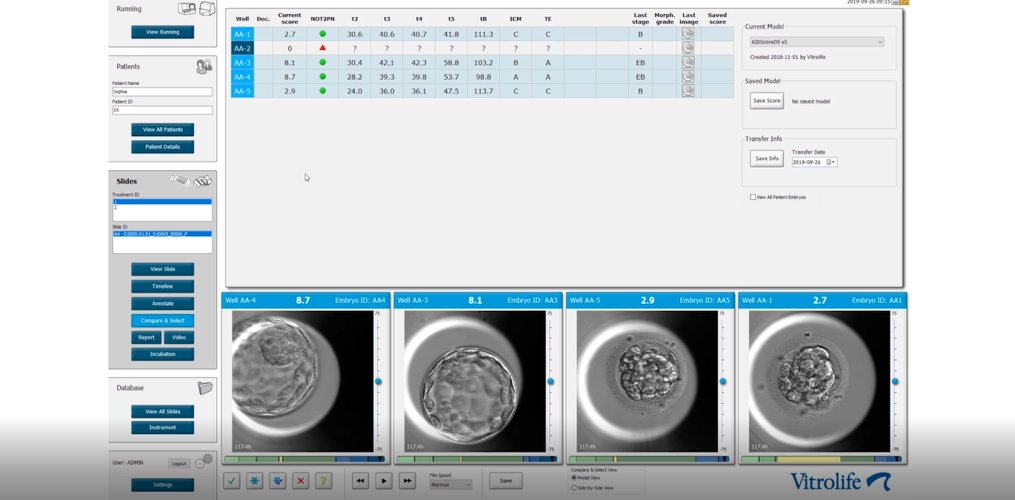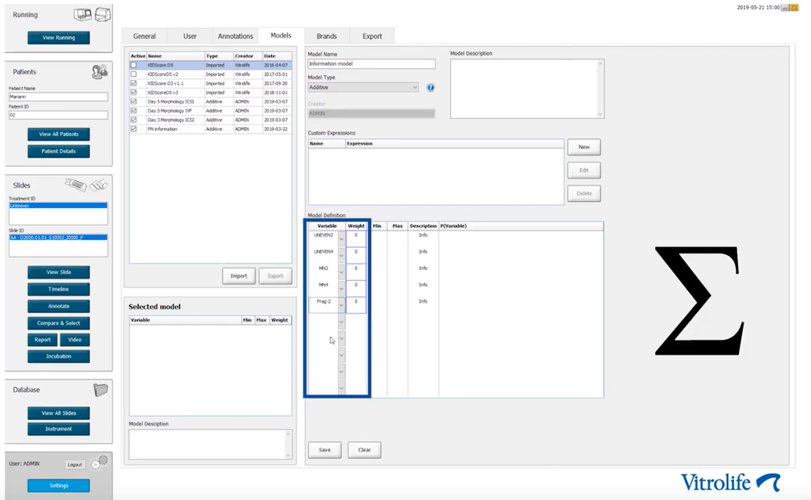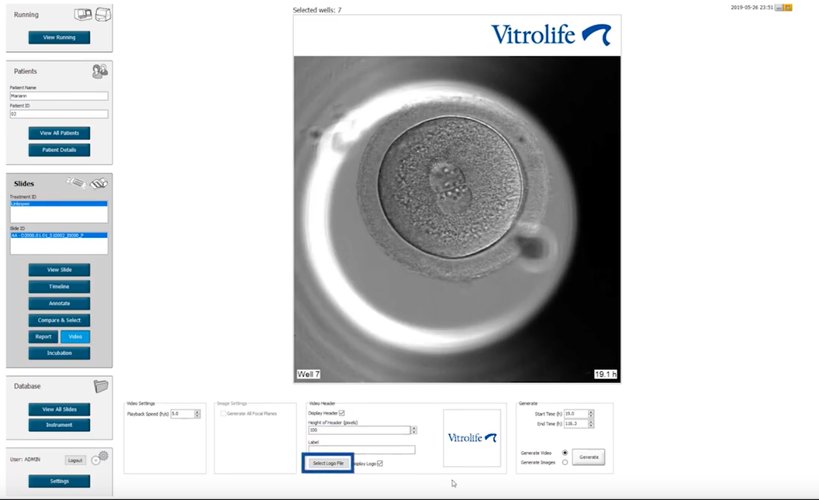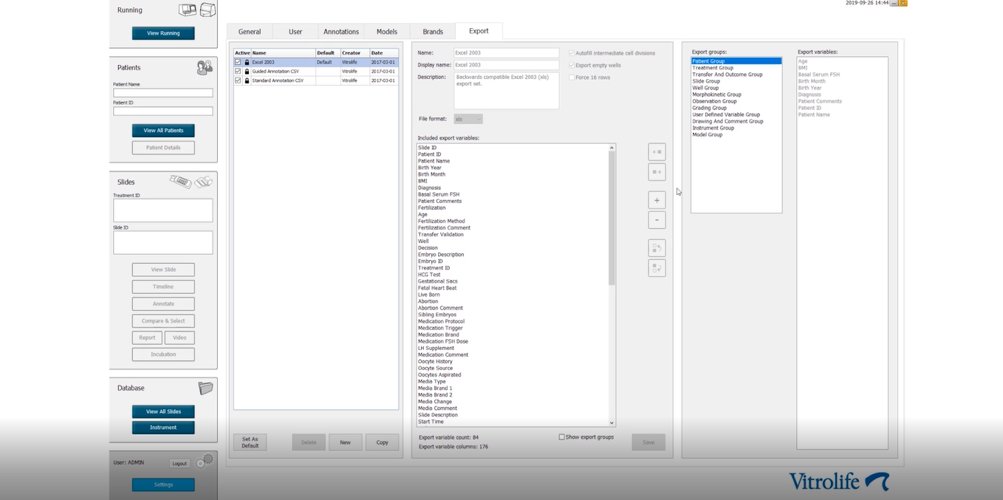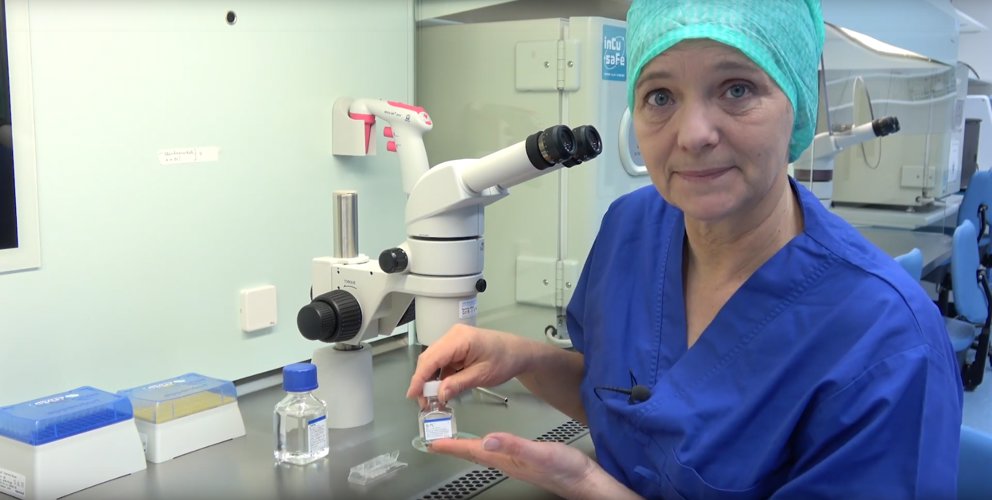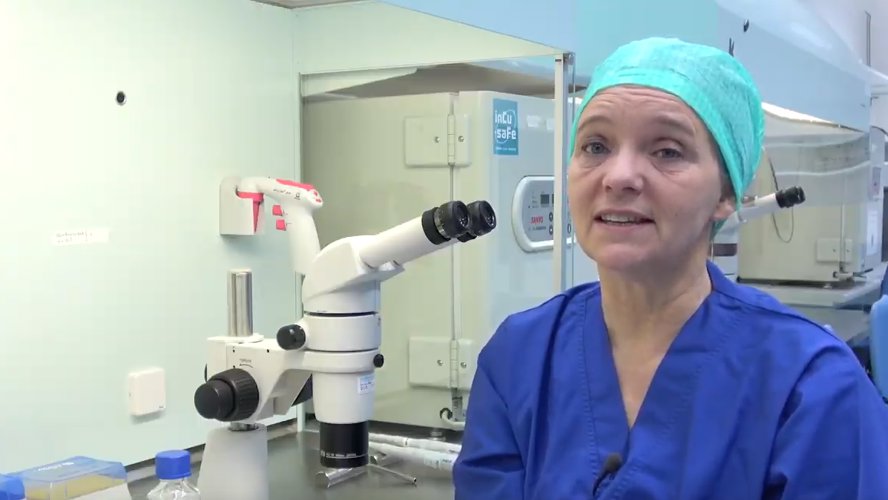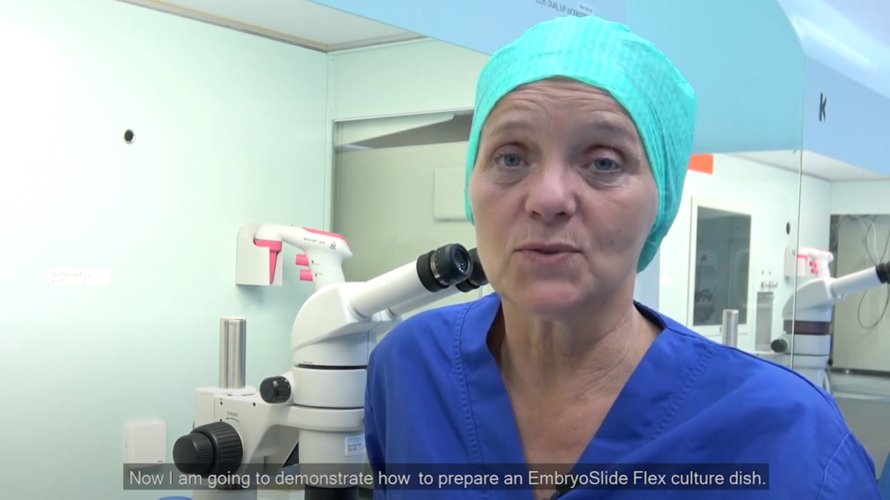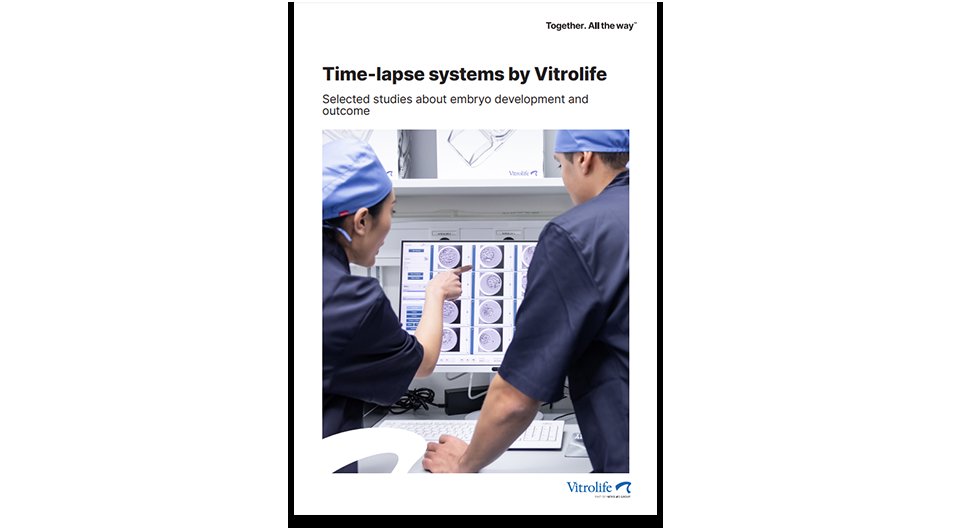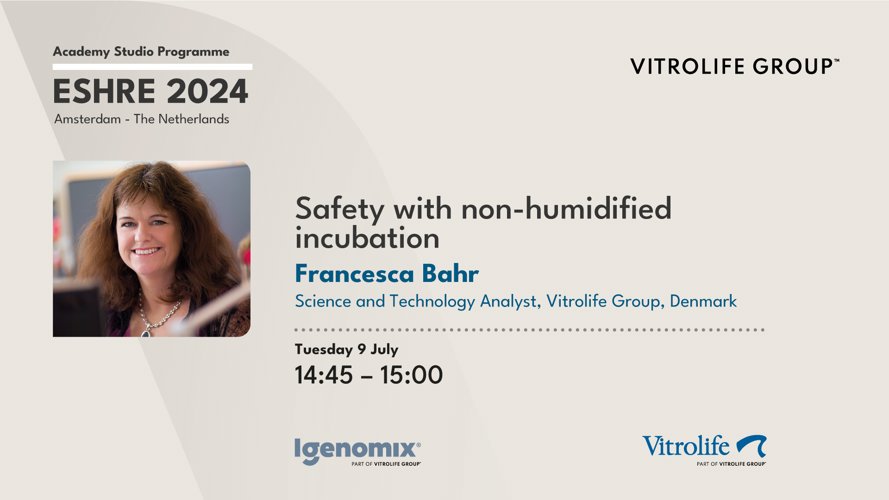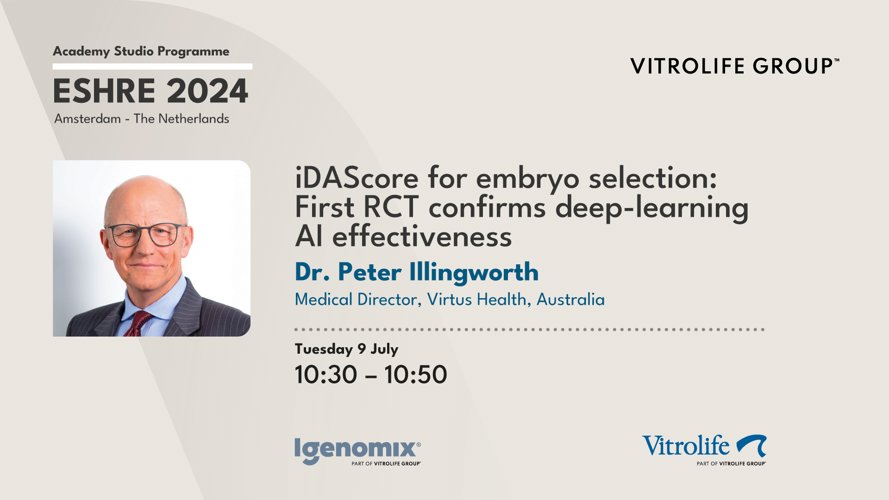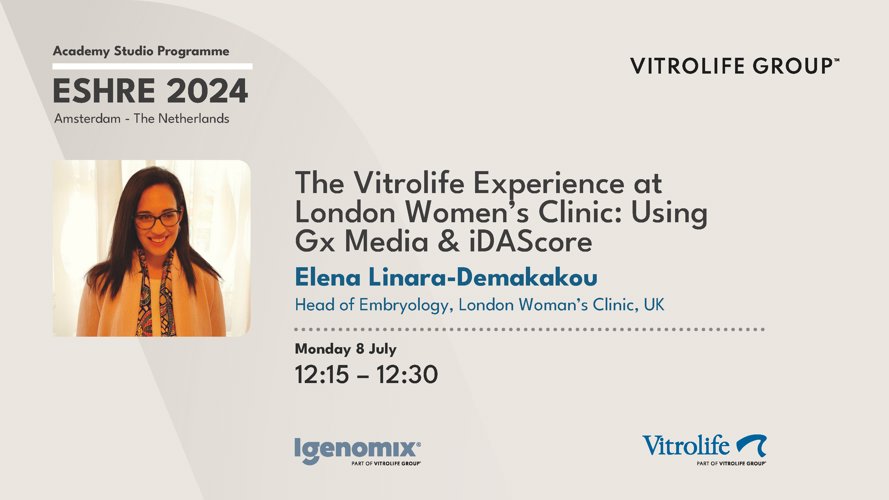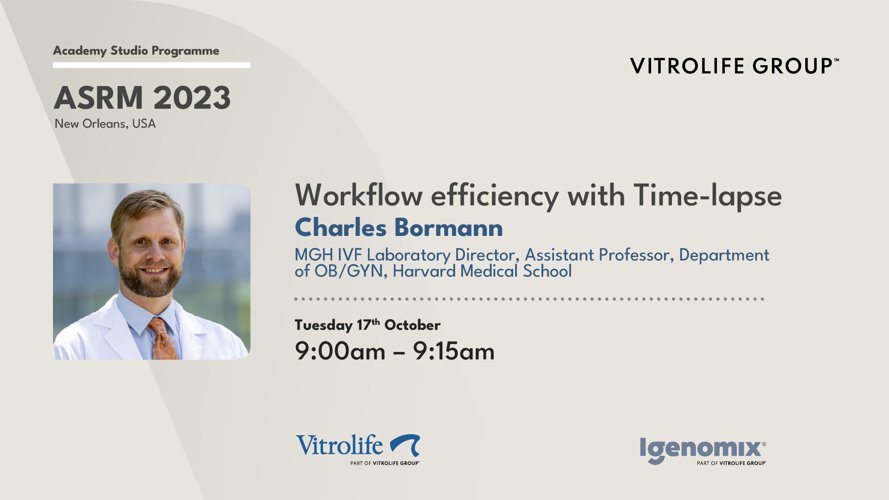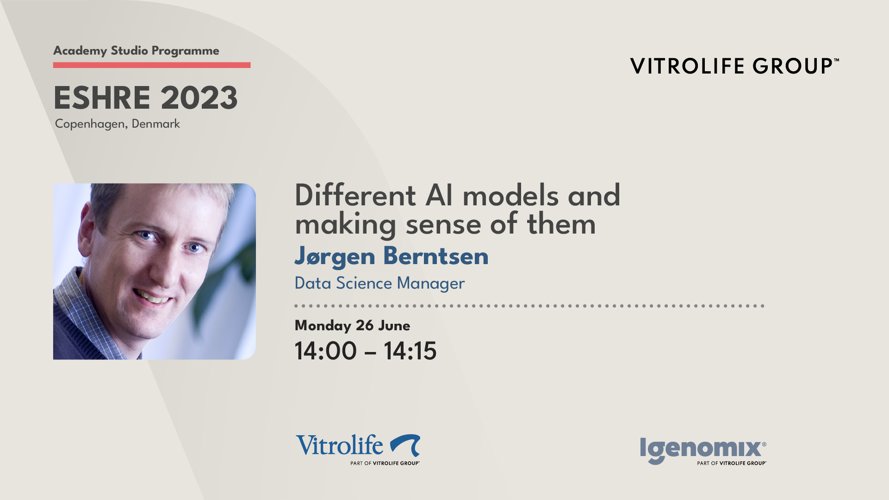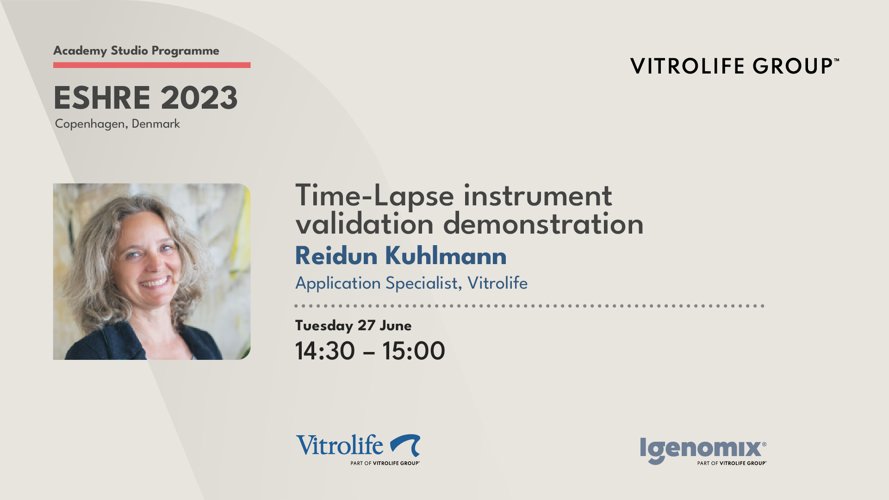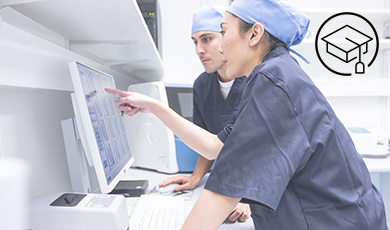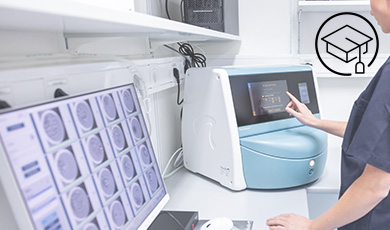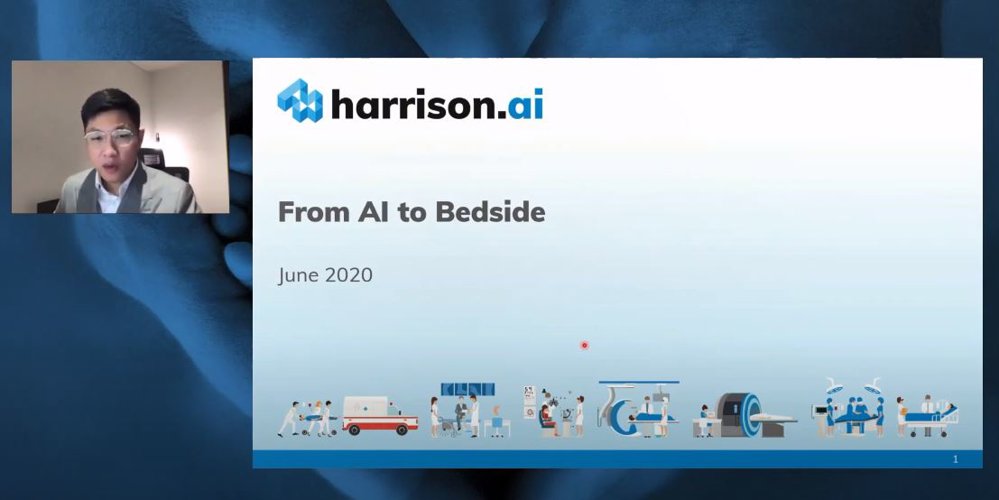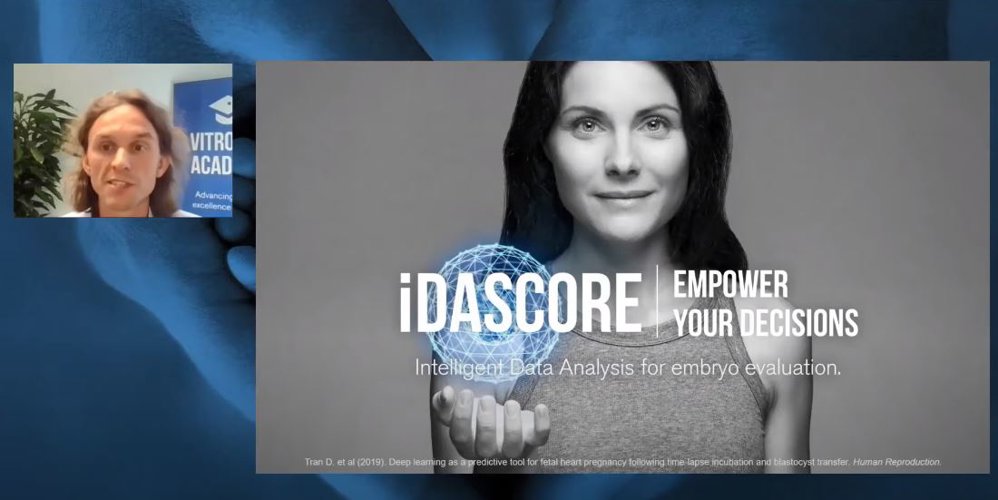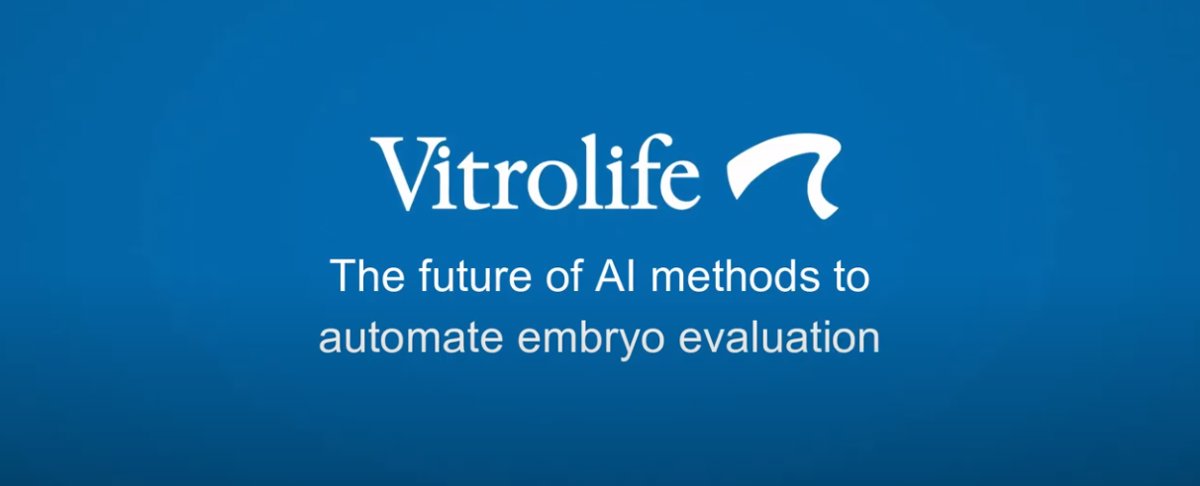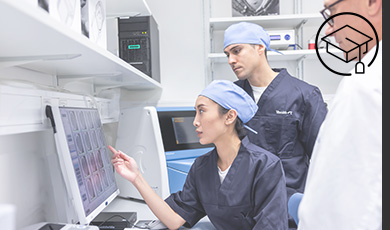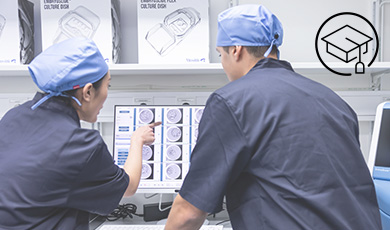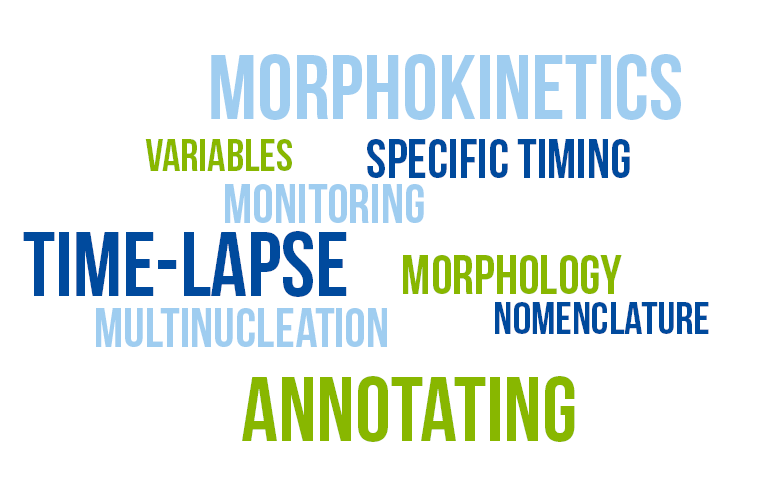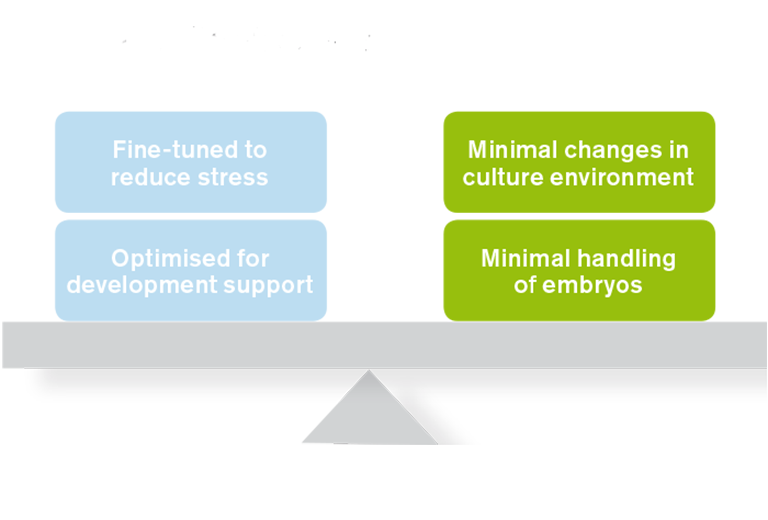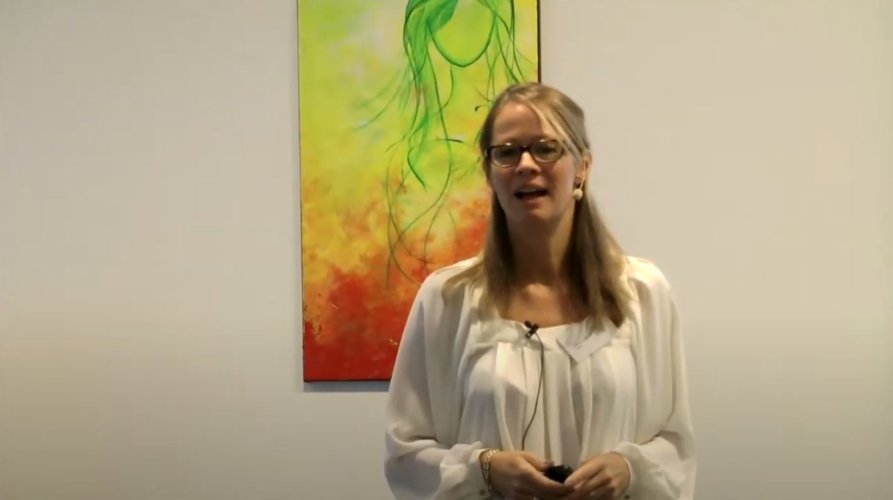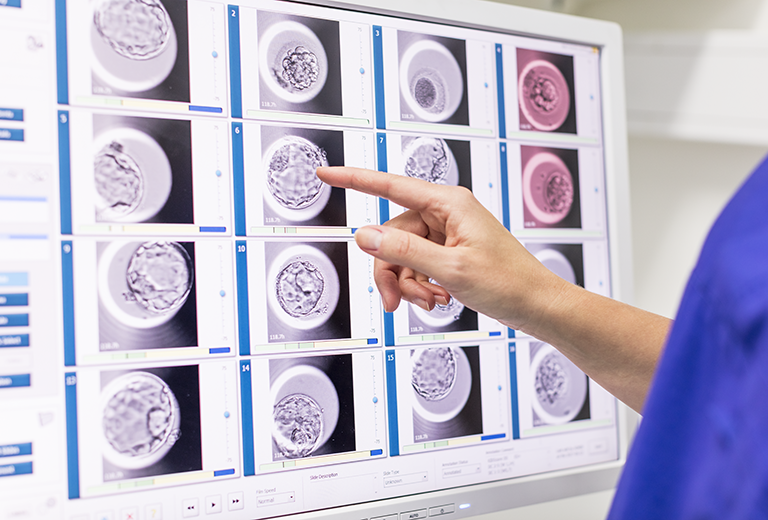Time-lapse
How to use these products
-
![]()
Tour around the EmbryoViewer
The EmbryoViewer software is the workstation from which the actual inspection and analysis take place. It is also the hub for registering and reading patient data and for visualising incubation conditions. In this video, we will give you an overview of the software.
-
![]()
Daily workflow with Guided annotation and KIDScore
In this video, we will look into how the EmbryoViewer software with Guided Annotation and KIDScore can help you get a simple and efficient workflow for analysing embryo development and deciding which embryo to transfer.
-
![]()
Setting up an annotation strategy for better workflow
To evaluate embryos, you need to collect information about each viable embryo in a cohort. In this video we will look into how to define such a strategy in the EmbryoViewer.
-
![]()
Guided Annotation for a better workflow – new features
Guided Annotation is a tool in the EmbryoViewer designed to make your annotation process more efficient. The new version of Guided Annotation is based on artificial intelligence-based algorithms. This video will teach you about the concepts of the tool.
-
![]()
Compare and Select –optimising embryo evaluation
“Compare & Select” is the EmbryoViewer software tool for comparing all embryos across a patient’s treatments. In this video, we will look into the different features of the “Compare & Select” tool.
-
![]()
Information model
Information models can be used to generate an overview of embryo development parameters and to streamline the embryo evaluation process by making sure that the same information is taken into account for all embryos.
-
![]()
Create and export videos
During this video, you will learn how to export a video of embryo development to a format that you can save on your computer or USB or, for example, include in a presentation
-
![]()
Making the most of your data – how to export
When you are using your EmbryoScope time-lapse system to register information about patient embryos and treatments, the export function of the EmbryoViewer represents a way to export this information into a spreadsheet format. In this video, we will look into how to set up your EmbryoViewer software to export the data you need.
-
![]()
Loading of EmbryoSlide culture dish
This movie demonstrates how to load the EmbryoSlide culture dish to the EmbryoScope time-lapse incubator.
-
![]()
Loading of EmbryoSlide+ culture dish
This movie demonstrates how to load the EmbryoSlide+ culture dish to the EmbryoScope+ time-lapse incubator.
-
![]()
Preparation of EmbryoSlide Flex culture dishes
This movie demonstrates how to prepare and load the EmbryoSlide Flex culture dish to the EmbryoScope Flex time-lapse incubator.
Read up on studies
-
![]()
Selected studies about embryo development and outcome
We have selected here a list of the studies about embryo development and clinical outcomes using EmbryoScope and EmbryoScope+ time-lapse systems with links to the articles.
Read now
Increase my knowledge
-
![]()
Webinar: 'Safety with non-humidified incubation'
Non-humidified incubation of embryos is not the same as dry incubation. Listen how Francesca Bahr, Science and Technology Analyst, Vitrolife Group, Denmark, explains the difference and demonstrates that the Embryo Scope Time-lapse system is a safe culture environment for embryos through its advanced technological design.
Watch webinar -
![]()
Webinar: 'The role of AI in improving clinical efficiency – Results from the first RCT for AI based selection'
In this presentation, Dr Peter Illingworth (Virtus Health) present the results of the world-first randomised controlled trial (RCT) evaluating the use of deep-learning AI for embryo selection in IVF. Following this, Jørgen Berntsen (Vitrolife Group) delve into the development and background of the second version of this innovative technology. Finally, David Gardner (Virtus Health) discuss the significant benefits this technology brings to the IVF laboratory, including enhanced consistency, efficiency, and objectivity.
Watch webinar -
![]()
Webinar: 'iDAScore for embryo selection: First RCT confirms deep-learning AI effectiveness'
Following a multi-centre RCT on the use of iDAScore as an embryo selection tool Dr. Peter Illingworth, Medical Director, Virtus Health, Australia, explains how the use of this system can save time 10 fold during embryo evaluation in the laboratory.
Watch webinar -
![]()
Webinar: 'The Vitrolife Experience at London Women's Clinic: Using Gx Media & iDAScore'
Elena Linara-Demakakou, Head of Embryology, from the London Woman’s Clinic in the UK shares her experience of using the iDAScore embryo evaluation software with the Gx media in their clinic.
Watch Webinar -
![]()
Webinar: 'Workflow efficiency with Time-lapse'
In this presentation, Dr. Charles Bowman, IVF Laboratory Director at Massachusetts General Hospital discusses the advantages of using time-lapse imaging in improving workflow efficiency in IVF laboratories.
Watch webinar -
![]()
Webinar: 'Diffrent AI models and making sense of them'
In this presentation from ESHRE 2023, by Jørgen Berntsen, Head of AI development at Vitrolife you will learn more about how to evaluate different models for embryo selection and how to estimate a model’s performance.
Watch webinar -
![]()
Webinar: 'Time-lapse instrument validation demonstration'
In this presentation from ESHRE 2023, by Reidun Kuhlmann, Application Specialist at Vitrolife, will guide you through the essential steps required to validate and calibrate the internal sensors of the EmbryoScope+ family of Time-lapse system. Validation checks ensure that your culture conditions are optimal for embryo development.
Watch webinar -
![]()
Webinar: 'Embryo selection with artificial intelligence: how to evaluate and compare methods'
In this presentation, Mikkel Fly Kragh walk you through the most common evaluation metrics and describe their strengths and weaknesses, while relating them to actual clinical practice. We also provide a checklist of things to be aware of when reading or conducting AU studies on embryo selection.
Watch webinar -
![]()
Webinar: 'Workflow efficiency related to iDAScore'
In this presentation, Marcos Meseguer will go through the topics of introducing the use of Time-lapse technology in the laboratory and share his experience of applying Artificial intelligence annotation tools, KIDScore and iDASCore, in practice.
Watch webinar -
![]()
Webinar: 'Breaking new ground in embryo evalution; unlocking the toolbox'
In this webinar, Professor David Gardner (Chairman) present Embryo evalution at Vitrolife Scientific symposium at ESHRE 2021.
Watch webinar -
![]()
Webinar: 'Past, Present and Future of Time Lapse in Clinical IVF'
In this webinar, Professor Markus Montag present Time Lapse at Vitrolife Scientific symposium at ESHRE 2021.
Watch webinar -
![]()
Webinar: 'iDAScore® - Changing the paradigm of embryo evaluation'
In this webinar, Jørgen Berntsen, Data Science Manager at Vitrolife, present performance of a fully automated AI-based embryo evaluation algorithm. We will also look at how the AI scores correlate with currently accepted embryo evaluation parameters.
Watch webinar -
![]()
From AI to Bedside
In this presentation, Dr. Aengus Tran, MD, Harrison.AI, will introduce us to Artificial Intelligence and its applications in the field of medicine. This presentation was a part of our scientific symposium 'AI based embryo evaluation: Empower your decisions' at ESHRE 2020
-
![]()
iDAScore – development of robust AI based embryo evaluation
Jens Rimestad, Deep Learning Specialist at Vitrolife, presents development and validation of a new AI-based tool, which is designed to automate embryo evaluation and provide scores to reflect their implantation potential. This presentation was a part of our scientific symposium 'AI based embryo evaluation: Empower your decisions' at ESHRE 2020.
-
![]()
Webinar: 'The future of AI methods to automate embryo evaluation'
Watch this recorded webinar from the IVF Worldwide Online Congress, where Dr. Mikkel Fly Kragh presented new developments based on time-lapse and artificial intelligence.
Watch webinar -
![]()
iDAScore® - the future of AI-based embryo evaluation
Are you interested in learning more about how artificial intelligence can be used in IVF? Read this blog post by Dr. Tine Qvistgaard Kajhøj where she takes you through the evolution of Vitrolife’s AI-based tools for IVF.
Read blog post -
![]()
Webinar: 'AI in time-lapse - automatic grading of human blastocyst'
In this webinar, Dr. Mikkel Fly Kragh will go through how he and colleagues have worked on integrating artificial intelligence into time-lapse and more specifically how they have automated blastocyst grading using AI.
Watch webinar -
![]()
Webinar: 'Latest technology used in embryo selection'
In this webinar, Prof. David Gardner discusses how the latest new technologies such as time-lapse, AI-based analysis of sequences of embryo development, metabolic profiling and non-invasive genetic testing are now coming together to assist in selecting not only the most viable but also the healthiest embryo for transfer. The culmination of the technologies is a significantly reduced time to a healthy pregnancy.
Watch webinar -
![]()
Webinar: 'Making the right choice the importance of streamlined embryo evaluation'
In this webinar Dr. Tine Qvistgaard Kajhøj will guide you through the benefits of streamlined embryo evaluation, how to perform it and how it helps you obtain improved results.
Watch webinar -
![]()
A guide to understanding time-lapse nomenclature
New assessment methods call for new assessment measures. Having a common nomenclature can form the basis for clearer communication of embryo assessment and evaluation. The nomenclature described in this blog post is what we have found to facilitate ease of agreement and understanding between time-lapse users.
Read blog post -
![]()
Time-lapse culture triggers new requirements on embryo culture media
In this movie Dr. Christer Silversand explains why you should use specific embryo culture media for specific applications. He also describes the development of G-TL - the first embryo culture medium specifically designed for time-lapse culture.
Watch movie -
![]()
What do patients think about time-lapse and what is the real impact for them?
In this presentation Dr. Alison Campbell, Director of Embryology at CARE Fertility, UK, talks about what their patients think about time-lapse and what the real impact is for them.
-
![]()
Using efficiencies from time-lapse technology to reduce the cost of IVF
In this presentation from ESHRE 2017, Dr. Cristina Hickman presents experiences from Boston Place Clinic in UK, an IVF clinic designed around time-lapse technology. Offering time-lapse to all patients has led to efficiencies in the laboratory processes that created opportunities for cost reduction over time.
Watch presentation
